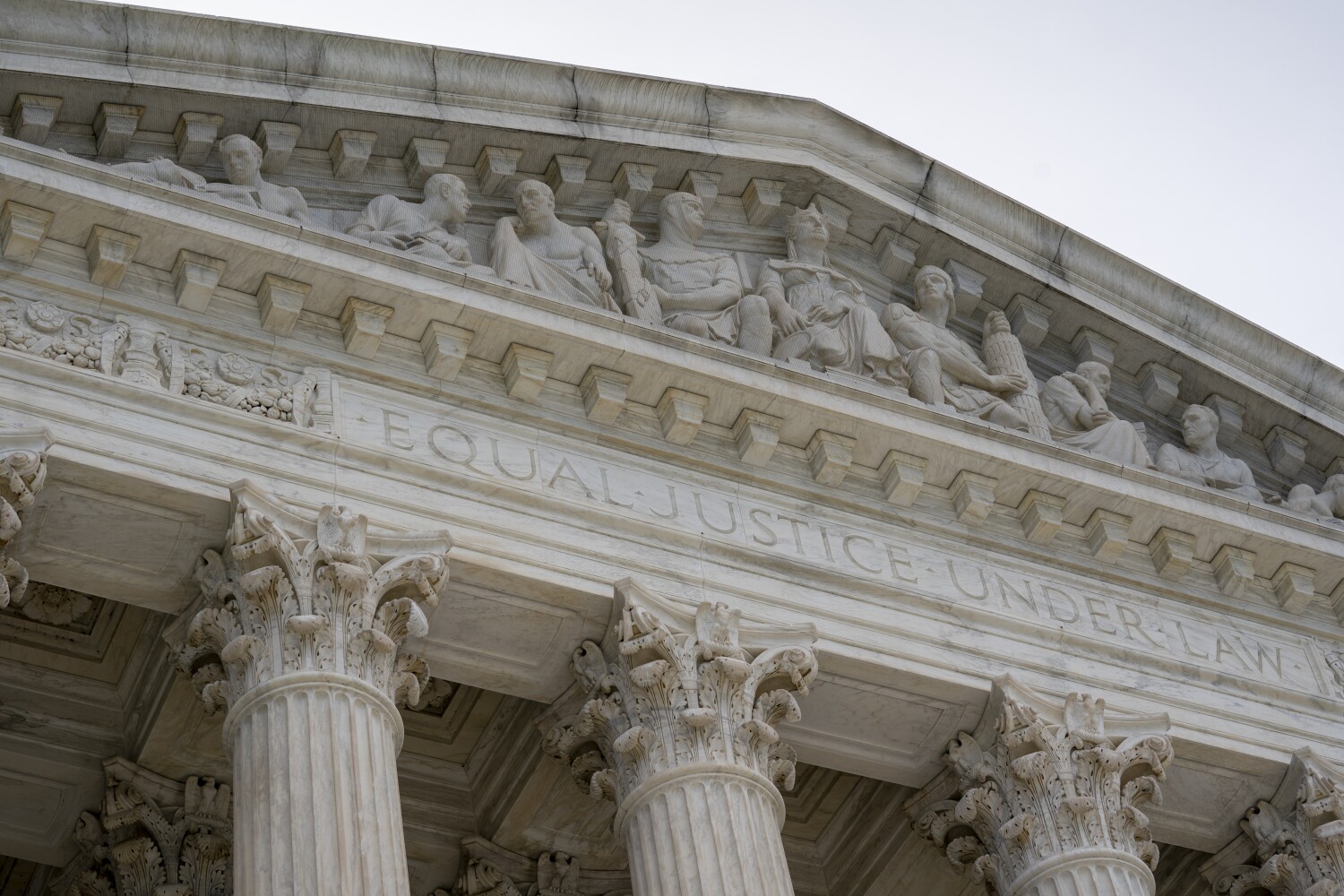[ad_1]

The Supreme Court on Friday rejected a highly unusual lawsuit backed by President Trump that urged the justices to overturn the election result by nullifying President-elect Joe Biden’s victory in four key states: Pennsylvania, Michigan, Wisconsin and Georgia.
In a brief order, the court said that the “State of Texas’s motion for leave to file a bill of complaint is denied for lack of standing under Article III of the Constitution. Texas has not demonstrated a judicially cognizable interest in the manner in which another State conducts its elections.”
The order spoke for seven of the nine justices. Conservative Justices Samuel A. Alito Jr. and Clarence Thomas said they would have allowed Texas to file its complaint, but did not say whether they agreed with it.
“I would … grant the motion to file the bill of complaint but would not grant other relief,” Alito said, “and I express no view on any other issue.”
The court’s decision to reject the Texas suit came as no surprise. There was no legal or constitutional basis for the Supreme Court to intervene on behalf of one state to overturn the election results in four other states.
The outcome is a victory for the rule of the law and the traditional constitutional order, and a clear rebuke to Trump and his Republican allies who counted on the nation’s highest court — with six Republican-appointed justices, including three Trump picks — to rescue the president from his decisive defeat at the hands of the voters.
The court’s action makes clear that the voters in each state — not unelected judges — decide who is elected president.
Trump lost his bid for reelection by more than 7 million total votes, and lost by a large margin of the states’ electoral college votes as well.
Biden, based on the states he won, is slated to receive 306 electoral votes to 232 for Trump, which was the same electoral college margin by which the president beat Hillary Clinton, who won the popular vote in 2016. The electoral college is to vote Monday.
In challenging the result, Trump was keeping an election promise: During the campaign he repeatedly said that if he lost, he would call the election “rigged” and contest it.
Having lost, he has spent weeks denouncing Biden’s victory as stolen even as his own legal teams have lost dozens of cases in state and lower federal courts.
The president and his campaign were free to challenge the results in the states. But his lawyers have failed to cite any significant evidence of flaws or fraud in the election. One after another, their claims have been rejected by state and federal judges, many of them Republican appointees.
The claims for Trump were weak enough that his lawyers did not appeal the cases to the Supreme Court.
On Tuesday, the high court without comment turned down an appeal filed by Trump supporters in Pennsylvania.
The next day, Trump joined the unusual lawsuit filed Monday by Texas Atty. Gen. Ken Paxton, a pro-Trump Republican who alleged “irregularities” in the four states singled out, and said the Supreme Court should toss out their combined 62 electoral votes for Biden.
The Constitution says each state shall decide on the manner in which it chooses its allotted electors, and all have decided to rely on the voters’ choice. Yet Republican attorneys general in 17 other states sided with Texas’ Paxton in seeking to have the high court overturn the choice of Biden by majorities of voters in Michigan, Pennsylvania, Georgia and Wisconsin.
The suit was supported by nearly two-thirds of Republicans in the U.S. House.
Paxton has been under indictment for securities fraud for several years, and came under investigation more recently after a number of top aides accused him of bribery and other offenses. He has denied wrongdoing, but his bold action on Trump’s behalf has spawned speculation in Texas and more broadly that Paxton is angling for a presidential pardon.
In his final brief filed Friday morning, Paxton told the court he stood firmly behind a “probability analysis calculating that the statistical chances of Mr. Biden’s winning the election in the Defendant States individually and collectively, given the known facts, are less than one in a quadrillion.”
This claim had been mocked on social media as “nonsense” and “flimflam.”
Trump and his allies have pointed to the president’s lead for much of election night to contest the later returns that shifted the outcome in Biden’s favor. But that dynamic had been widely predicted prior to the election.
Polls had shown that Democratic voters were more likely to cast ballots by mail to avoid exposure to the coronavirus, and most states don’t count those ballots until election day — some not until polling centers close.
Republicans were more likely to vote in person, and those ballots are quickly tabulated on election day.
That made Trump appear to be winning initially, but he fell behind as states began tabulating largely Democratic mail ballots.
[ad_2]
Source link